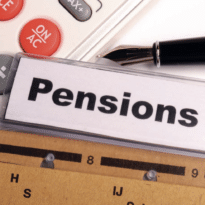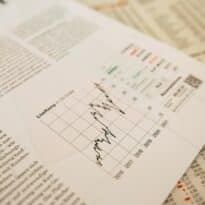Reflecting on managing the Global Equity Income Fund since inception in 2012, Mark Peden, Investment Manager, Global Equities, at Aegon Asset Management looks at what has worked in the past 10 years, and what will prove a success in the next 10.
With high inflation and the end of cheap money creating a much more volatile market environment, Peden says the current conditions are perfect for a global equity income strategy to prosper in the future.
“It is clear the market environment that persisted for much of the past decade has changed. Gone are the days of rampant capital returns fuelled by ultra-loose monetary policy. Instead, we are in a period where rising inflation and interest rates have led to elevated volatility and forced investors to reassess equity valuations.
“While this has caused concern in many parts of the market, it is precisely the type of environment in which an equity income strategy should thrive. Dividends are likely to make up a greater proportion of future total returns, in keeping with the longer-term split between capital and income.
“It is impossible to look back at the past decade without mentioning Covid-19. Gloomy projections suggested it would be years before income would return to anything like pre-pandemic levels. Yet, economies rebounded and so too did dividends. Global dividends reached a new all-time high in 2021, surpassing the previous best from 2019. They are projected to exceed that again this year.
“Dividends have a solid record of keeping pace with inflation, a key concern for investors as real incomes are squeezed. Allied with the lower-beta, defensive characteristics of global equity income funds, these factors mean that they can offer a compelling choice for investors in the current climate.
“It has not always been easy being an equity income manager in the past decade. But despite (or because of) the uncertain backdrop we face today, this is one of the best environments for global equity income investing in many years. It is also one in which a quality income approach will thrive.”
Looking at where the equity income opportunities lie, Peden underlines the key aspects that the fund looks for in quality income stocks, including ‘compounders,’ ‘hoarders’ and ‘de-equitisers.’
Peden also underlines the importance of low turnover and believes one of the greatest pitfalls for investors in the past decade – and moving forward – is the mistake of falling into ‘value traps.’
“‘Compounders’ are stocks which can deliver multi-year dividend increases and are a key part of most equity income funds. For example, we hold Cincinnati Financial, which has increased its dividend for 61 consecutive years,” he says.
“Hoarders’ are stocks that are under-distributing and can significantly increase their pay-outs. Morgan Stanley is an example from the current portfolio. Finally, ‘de-equitisers’ are stocks where the company’s capital structure can be improved, resulting in higher pay-outs. Rio Tinto is an example from the current portfolio which has served us well.
“Four of the portfolio’s current 47 stocks (Pfizer, Lockheed Martin, TSMC and Johnson & Johnson) have been there since launch. A further two (Nestle and Zurich) were there at the beginning, although left for part of the intervening periods as the investment cases changed.
“The search for yield often entices income investors to fall into ‘value traps’ by selecting stocks with exceedingly low valuations and/or high yields. When it comes to yield, if it looks too good to be true, it usually is. This is supported by evidence that stocks with the highest yields typically see the lowest growth in dividends and often fail to deliver all their promised income.”
With the dominance of low-income growth stocks in the past decade, tech alternatives such as Microsoft have proved effective for equity income. Peden also reflects that ESG is now a much larger aspect of the fund’s strategy.
“The bull market of the mid and late 2010s was dominated by growth stocks, with the incredible success of the FAANGs a significant driver of overall returns. But the dividend yields of these stocks are paltry.
“In terms of income and we have never invested in stocks with negligible dividends to chase a growth-driven market. Microsoft is one of the few big technology stocks that passes enough criteria on our dividend screening to merit consideration, so has helped us to hedge the strength of the FAANG stocks over time.
“Given the huge increase in the prominence of ESG investing in recent years, we also seek to maintain a positive ESG profile. The portfolio in the fund’s earliest years included alcohol, tobacco, and oil stocks, with Reynolds American at one point the largest holding. This was good for short-term income, but less so from a long-term sustainability perspective.
“The picture is very different now, with the alcohol and tobacco producers gone and the only energy company remaining is TotalEnergies, a major investor in renewables for the transition away from fossil fuels. This is reflected in the ESG ratings of the portfolio. Sustainable companies pay sustainable dividends.”
[Main image: volodymyr-hryshchenko-6YtOaq-PyHY-unsplash]





























